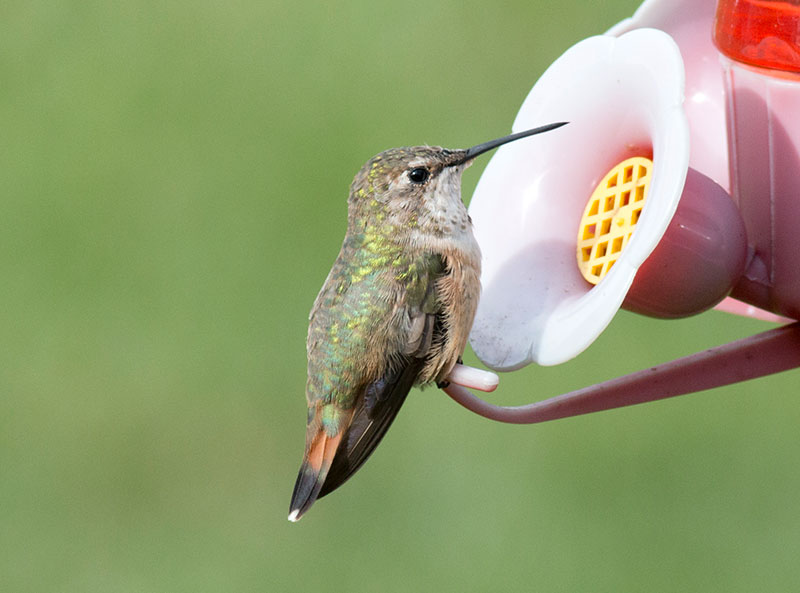Rare Hummingbirds visit Lycoming County
11/27/16
By David Brown
Over the past few decades the pattern of western hummingbird species showing up in the eastern United States in the fall has been increasingly documented. As more people become aware of this phenomenon and leave feeders up more rare birds are being discovered. Two rare hummingbirds have been found in Lycoming County this fall.
On October 25th a homeowner near Elimsport spotted a hummingbird. I went over the next morning to photograph and identify it. The bird was mostly green but had some orange which combined with other details allowed it to be identified to the Selasphorus genus, specifically either a female rufous hummingbird or Allen's hummingbird. Rufous hummingbird is the most common of the vagrant species to show up in Pennsylvania. Allen's hummingbird has only been documented a few times and it looks nearly identical to rufous, especially females. A close look at the fanned tail is usually required to note a slight difference in feather shape and size. Photos of the tail and probability point to the bird being a rufous hummingbird but better looks at the tail would be required to be confident of that identification. [The bird was later banded and confirmed as a Rufous Hummingbird].

Rufous Hummingbird
On November 11th a hummingbird showed up at my own feeder in Montoursville at dusk. I alerted local birding friends and a bander. The next morning at 6:40am the bird showed up and over the next hour my living room filled with birders. Around 8am the bird was captured to be measured and banded. Measurements confirmed that it was a female black-chinned hummingbird. This species is in the same genus as ruby-throated hummingbird, which is the only hummingbird that nests in Pennsylvania. This was the third record of black-chinned hummingbird for Pennsylvania and the first record for Lycoming County. Over the next few days more than 50 visitors came to see the bird including some from as far away as Philadelphia and Newark, Delaware.

Black-chinned Hummingbird
The bird regularly visited my feeders but as the days warmed up she was often seen catching insects as well. On the morning of the fifth day she fed more than usual. I watched as she visited the feeder for the last time at 8:30am. After fueling up she likely continued migrating south.
These hummingbirds are quite far from their usual range. Rufous hummingbirds primarily nest from Alaska south to Washington and Oregon then migrate to Mexico for the winter. Black-chinned hummingbirds nest in the western United States and winter in western Mexico.
Lycoming Audubon has a winter hummingbird contest where prizes are awarded for confirmed rare hummingbirds. See our website for full details. Fill your hummingbird feeder with a ratio of 4 parts water to 1 part table sugar. Red food dye is unnecessary and potentially harmful to the birds. Take the feeder inside at night if it will freeze. Keeping feeders up in the fall does not prevent hummingbirds from migrating and can provide a consistent food source for vagrant hummingbirds that have just migrated a considerable distance. If a hummingbird shows up from now through the winter it is probably a rare species so contact me or one of the others listed in the contest information immediately.
It was a thrill to host a rare hummingbird this fall and I hope others get the same opportunity so leave those feeders up.